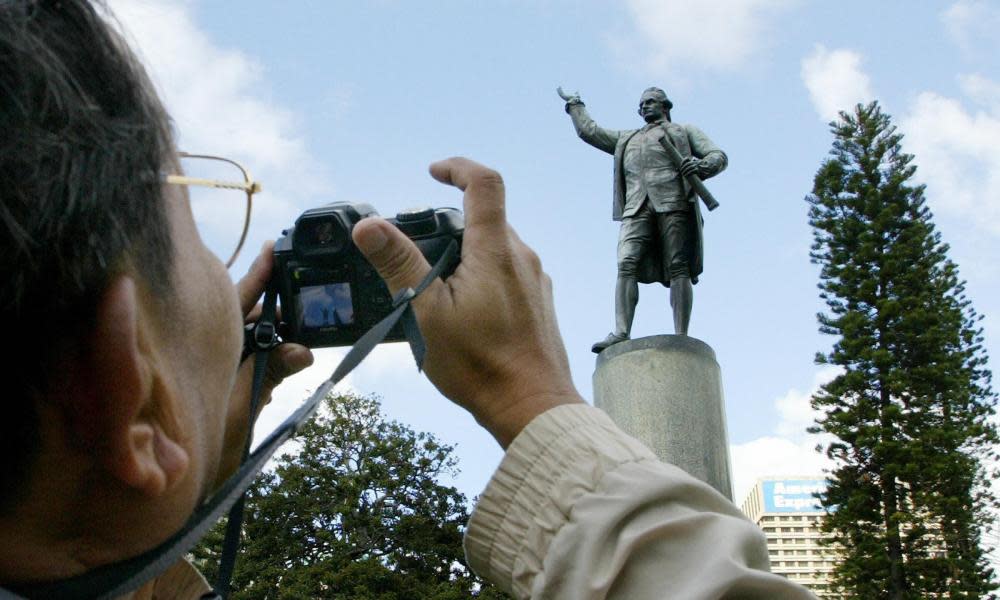Sydney under pressure over Captain Cook statue claim he 'discovered' Australia

The City of Sydney council has referred to its Indigenous board concerns about a statue inscription claiming Captain James Cook discovered Australia.
The Cook statue in Hyde Park has been criticised for ignoring tens of thousands of years of Indigenous history in Australia. Its inscription reads: “Discovered this territory 1770.”
However councillors have warned against reducing discussion of Aboriginal dispossession to a narrowly focused “culture war”.
The ABC broadcaster and Indigenous editor, Stan Grant, this week called for the statue to stay but the inscription to be changed. He said it was a “fiction” that spoke to the emptiness and invisibility of Indigenous Australians.
“Prime minister Malcolm Turnbull, defending Australia Day this week, said it is also a day we honour Indigenous Australians,” Grant wrote in a piece for the ABC.
“If he is serious then what could be more apt than to correct a monument that tells us, still, that in 1770 we did not exist?”
The debate has sparked comparisons with the United States and the removal of statues of confederate general, Robert E Lee. It also comes as Victorian councils moved to change Australia Day to a more culturally appropriate date.
The City of Sydney council said early on Wednesday it was still considering whether to refer the matter to its Aboriginal and Torres Strait Islander board.
But it confirmed just before midday that it had informally referred the issue to the board, and requested it be placed on the agenda at their next meeting.
The councillor Jess Scully cautioned against diverting the debate about Indigenous dispossession and colonisation into a “culture war over one statue”.
She said a broader discussion about the invisibility of Indigenous Australians across the city needed to be had. Scully lamented the near-complete absence of statues commemorating Indigenous figures in Sydney.
“It’s about actually saying and showing and having markers of the fact that Aboriginal people were here and are here – always was, always will be Aboriginal land. To me that’s the point, it’s about the invisibility,” she told Guardian Australia.
A number of historians have rejected Grant’s call for the inscription to be changed. Keith Windschuttle, historian and editor-in-chief of the rightwing Quadrant magazine, said the inscription was accurate.
Windschuttle, in a piece for the Australian, argued Cook was the first person to navigate the entire east coast, making him the first person to discover “this territory”.
He said Indigenous Australians undoubtedly had the best knowledge of their area, but: “None of them gained the view of it that Cook had in his four-month journey from Port Hicks to Cape York in 1770. He was the genuine discoverer of the whole entity.”
Scully said any decision about the statue should not be made by another white person and was why it was an issue best left to the council’s Atsi board, which would consult and represent the views of Indigenous communities.
“The other point that needs to be made here is, that I don’t know how helpful it is to have a whole bunch of white people ... having a debate about Aboriginal dispossession and the colonisation of Australia,” she said.

 Yahoo News
Yahoo News 
